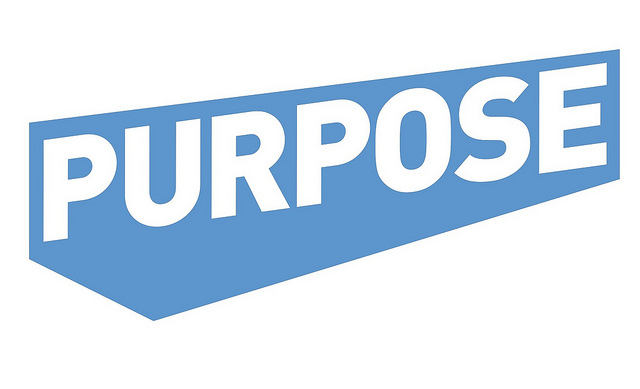|
|
|
Archive for July, 2018
Tuesday, July 31st, 2018

Yesterday I commented that too often the last place bosses, and people in general, look for the cause of a problem is in the mirror.
Along with that proclivity of externalizing the source of difficulties, both great and small, is their belief that reasons excuse most anything.
Not excuses, oh, no, but reasons.
There’s a difference, you see.
Reasons make it OK.
As long as there’s a reason it doesn’t seem to matter much what “it” is.
Excuses, you see, seek to lesson blame/responsibility, while a reason explains/justifies “it.”
They may sound similar, but excuses admit something was wrong, whereas if there’s a reason then nothing really happened.
But at the end of the day, neither negates “it” or makes “it” acceptable.
Image credit: ♥*.Holly.*♫
Posted in Communication, Ducks In A Row, Personal Growth | No Comments »
Monday, July 30th, 2018

Poking through 12+ years of posts I find information that’s as useful now as when it was written.
Golden Oldies is a collection of the most relevant and timeless posts during that time.
This post dates from 2013, but it could have been any time in the previous centuries. And not just bosses, but people in general usually look externally for the source and solution to whatever is happening. However, they are both more often found within our own MAP, our own words and our own actions.
Read other Golden Oldies here.
Everything today is about innovation, creativity, productivity and how to increase them all.
Bosses at every level read books/blogs/social media, listen to management gurus and attend seminars looking for methods and approaches that will boost all three.
They look for solutions outside, but rarely look in the mirror.
Too few bosses, no matter what happens or what feedback they receive, recognize that it’s their MAP and their actions, not their people’s, at the bottom of their under-performing groups.
After all, if you
-
- ask for input and ridicule those who offer it, why be surprised when you stop receiving it?
- tell your people you want to solve problems while they’re still molehills and then kill the messengers who bring you molehill news you shouldn’t be surprised to find yourself grappling with mountainous problems requiring substantially more resources.
- tell people their ideas are stupid, whether directly or circumspectly, or, worse, that they are for thinking of them, why should they offer themselves up for another smack with a verbal two-by-four?
I could list many more examples, but you get the idea.
Your team’s results are a direct reflection of you, so before you start ranting or whining about your group’s lack of initiative and innovation, try really listening to yourself, the feedback you receive and give, and then look in the mirror—chances are the real culprit will be looking straight back at you.
Image credit: Meeb Forman
Posted in Communication, Golden Oldies, Motivation, Personal Growth | 1 Comment »
Friday, July 27th, 2018
 
A Friday series exploring Startups and the people who make them go. Read all If the Shoe Fits posts here.
Short post, longer articles, but worth the read.
Not all founders are focused on valuation.
Some think it through, realize their mission is the most important thing and find like-minded investors.
What has made us really successful is this idea that we’re not building a company. What we’re doing is solving a problem. In that sense, we’re not emotional about our solution but, rather, constantly listening to our customers and the market and being able to then adjust alongside that. –Shivani Siroya, founder of Tala.
Others get seduced by the idea of ego-boosting valuations, money to drive growth and a buy-out that lets them retire — or do it again.
Most founders dream of building a product that eventually becomes a household name and sells for a billion dollars, but chasing that goal comes with some downsides. The grow-at-all-costs model inevitably forces you to sacrifice something you care about in service of short-term revenue growth, whether that’s your culture, your employee experience, your products, or your creative approach.
That said, when they find the fun gone some go to great lengths to extricate themselves and their company from the investor attitude of “growth first/last/always!” as opposed to the radical idea of pleasing customers, employees and thinking for the long-term.
The Wistia founders felt so strongly that they preferred debt to selling — a large amount of debt.
We turned down the offer to sell Wistia and instead took on $17.3M in debt. This allowed us to buy out our investors, gain full control of Wistia, and take the path less traveled in the tech industry.
Read Wistia’s story, as told by it’s founders, on it’s site.
There’s a lot of hard-won wisdom, along with pragmatic explanations of what look like touch-feely decisions.
What is often forgotten in startup land is the high value associated with being happy to get up and go to work.
Image credit: Tala and Wistia
Posted in Culture, Leadership, Role Models | No Comments »
Thursday, July 26th, 2018

I work for a channel partner within the software industry. One reason I chose to work at my current job is the fact that we align with the customers needs, find a product that fits and help implement it. I appreciate that we go to market not because of a marketing brochure, we go to market with the clients needs first.
I had an opportunity today to learn about a new vendor that is in the space I focus, workload automation.
A big word for an industry that runs everything from your bank transactions to the Starbucks app (true story). This vendor is new to me but fits a segment of the market that we are not currently meeting. It does most things that our customers need and the company seems ethical.
I say all of this to tell you it gave me some hope today. I am in a position now where I am helping to shape the direction of my company and leave a mark.
Is that enough to go to work? I find that having purpose helps a lot. It gives greater satisfaction and focus when you have purpose.
Of course, my family helps in this regard, but family doesn’t always help with burnout. Sometimes it contributes when you’re getting woken up several times a night by the baby! Money can help sometimes, too, but I find it ultimately empty. It leaves you wanting more and never satisfied.
For me, I have found what gives me the most purpose is when my input is desired, I heard and I contributed.
What gives you purpose?
Image credit: leesean
Posted in Motivation, Personal Growth, Ryan's Journal | No Comments »
Tuesday, July 24th, 2018

Words are tossed around today with little consideration for their actual meaning, let alone accuracy of usage.
Sometimes it doesn’t matter, but misusing others can be the basis for serious errors, while treating words as interchangeable, as if they are synonyms, can have dire consequences.
This is especially true when the subject is emotionally charged or carries a lot of baggage — such as diversity, the great catch-all.
I can also say that I, too, have used the following incorrectly: privileged, underrepresented, marginalized, diversity, and inclusion.
Let’s take a look at what the words actually mean.
- Privilege is about access.
- Being underrepresented is about numbers.
- Being marginalized is about treatment.
- Diversity is about variety.
- Inclusion, which is about experience—the experience of a person, a group, or a community.
None of these words are interchangeable; each has a complete, stand-alone meaning in and of itself.
Companies are famous for signage promoting their values, mission, etc.
Perhaps the time has come for a new one based on the true definition of these five words.
The poster covers talk.
However, the talk is worthless unless it is partnered with the walk.
Exactly like diversity and inclusion — the first means nothing without the second.
Image credit: TEDx NJLibraries
Posted in Communication, Culture, Ducks In A Row, Motivation | No Comments »
Monday, July 23rd, 2018

Poking through 11+ years of posts I find information that’s as useful now as when it was written.
Golden Oldies is a collection of the most relevant and timeless posts during that time.
I was reminded of this post Friday when KG shared some thoughts about leadership. The standard saying, “there is no ‘I’ in team” is all too true, but changing a lowercase ‘i’ to uppercase can often alter a word’s meaning substantially.
Read other Golden Oldies here.
If you truly want a culture of innovation, then you also need to create a culture of leadership.
Last week I commented that if the ‘i’ in leadership is capitalized it changes leadership to leadershIt.
Whereas leadership can be a great motivator, leadershIt is a guaranteed demotivator.
Visions and other leadership functions done with an eye to self-aggrandizement aren’t likely to resonate whether done by positional leaders, leaders in the instance or those who aspire.
Last year I wrote
Because initiative and leadership are synonymous, leadership needs to be pushed out of the corner office and spread throughout the organization; doing so will encourage growth, creativity and innovation.
If leadership is the fertilizer then culture is the water, without which nothing will grow, and people are the seeds from which ideas come.
By spreading leadership evenly through out your company garden and watering regularly, leaving no unfertilized or dry patches in which a seed will be stunted or die, you assure yourself a bountiful harvest that will be the envy of your competitors.
Two follow-up posts have more on this topic here and here.
This isn’t a new idea, just a new way of phrasing it; Lao Tzu said it best 4000 years ago, “To lead the people walk behind them.”
The one thing that remains constant in all these discussions is that you always have a choice—this time it’s between leadership and leadershIt.
Image credit; Martin Cathrae
Posted in Culture, Golden Oldies, Leadership | No Comments »
Friday, July 20th, 2018

A Friday series exploring Startups and the people who make them go. Read all If the Shoe Fits posts here.
As a founder I’m identified as a leader, but I don’t believe that any position makes one a leader.
Nor do visions, speeches, brilliant presentations or skilled fundraising.
I believe you recognize a leader by the quality of their team.
That doesn’t mean hiring someone else’s stars, it means hiring good people and providing all of them an environment that helps them become stars.
Over the years, I’ve collected short quotes that inspire me and help me become a leader in fact, not just in name.
Here is one of my favorites.
The task of leadership is not to put greatness into humanity, but to elicit it, for the greatness is already there.
John Buchan,
historian and political leader
I hope you find it as useful as I have.
Image credit: Wikipedia
Posted in Culture, Leadership, Motivation, Personal Growth | 1 Comment »
Thursday, July 19th, 2018

I have a one year old daughter who is delightful, spunky and generally pretty happy. She is also accustomed to a certain standard of living that my wife and I are now trying to change.
Specifically, that standard of living is sleeping in our bed each night. With all of our children we start the first year in our room with a bassinet that is next to our bed. It allows for us to tend to them while keeping them safe and secure as well.
With our twins the system worked where we would feed them through the night, rock them and set them back in the bassinet for more dreamland.
The process started the same for our latest but over time she resisted going to her bassinet and decided she wanted to sleep in our bed. Now my wife and I are of course exhausted and we love her so what’s the harm if she starts sharing the covers?
You would be amazed how much room a 10 month old will take up, they love to stretch and kick and pull hair. They also prevent sound sleep for the parents while doing that.
The time has come that our little lady needs to go to her own room to sleep and this leads us to our current stage of sleep training.
I am not always the best husband, but I will tell you this, if you do not get up when your partner does to tend to baby, you’re wrong. And it lead me to thinking about how this applies to work.
When there are challenges at work or time sensitive events does everyone pitch in or is it a one person show? These moments in time where a lot is on the line tend to show the true colors of your team. When stress hits it’s easy to hide or get away and is tough to stand and face the challenge head on.
How do you react when times are tough? I try to look at each event and learn. Sometimes I make a good decision and sometimes I have an opportunity to improve. However I keep the mindset of always improving to ensure that I don’t crest habits that will lead to negative outcomes.
I am happy to say the culture in my household is generally happy, with the occasional cross word said in the middle of the night
I am making it a point to have that same culture at work, too.
Image credit: Jennifer Gensch
Posted in Culture, Personal Growth, Ryan's Journal | No Comments »
Wednesday, July 18th, 2018

Social media is quick to strike if a company doesn’t live by its values, whether a Silicon Valley darling or a startup in China.
At least it does when it comes to sex, harassment, drugs, and the like.
However, social media is great at turning a blind eye to the lying actions of the giants — kind of a specialized “too big to…”
To understand the true impact of the lying, one has to recognize that the major difference between the US and other countries is that the US legalized corruption under the term “lobbying.”
Anyone who follows the news knows that companies and individuals hire or employ lobbyists to sway politicians to approve/disapprove new legislation.
The lies I’m referring to are most blatantly from Facebook, but the others aren’t far behind.
It boils down to a “say what they want to hear, but do as you please” attitude.
You can see this playing out in California where millions are being raised specifically to kill, or at the least seriously defang, California’s nascent privacy law.
In addition to Facebook, Google, AT&T, Microsoft, Amazon, Verizon, and the California New Car Dealers Association have each contributed six figure donations to the Chamber account set up to defeat CCPA. Uber, the Data & Marketing Association, Cox Communications, and the Interactive Advertising Bureau have each contributed $50,000 to the account, according to disclosures.
They consider it bad enough in Europe, where the population has the temerity to think they not only own their personal data, but should control its usage.
Do that in California, which could lead to other states and, eventually, the country?
How dare them.
And how dare Americans for thinking they should have the same rights.
Who the hell do they think they are?
Image credit: Kevin Hale
Posted in Business info | No Comments »
Tuesday, July 17th, 2018

Lots of good external reading today.
At every level, some of the toughest, most hard-headed, business people work for Blackrock; not surprising, since it is the world’s largest asset management firm, with more than $7 trillion under management.
That’s large enough to get most financial markets to sit up and take notice when it speaks — and speak it did early this year.
Larry Fink recently created a shockwave. As cofounder, chairman, and CEO of BlackRock, one of the world’s largest global asset management firms, in an open letter to CEOs he caught the attention of financial markets and beyond by insisting on the importance of companies serving a social as well as financial purpose.
The idea that corporations have a social responsibility to a much larger audience than their investors are heresy in the financial world.
But Fink can’t be ignored as a liberal do-gooder, especially when he backs his comments with hard data.
This was followed up a few months later by Jonathan McBride, managing director and global head of inclusion and diversity at BlackRock.
Blackrock hit the nail on the head with McBride’s title — not ‘diversity,” but diversity and inclusion.
Hiring a diverse workforce is actually the easy part, because there is a multitude of talented candidates available once you knock down bias, unconscious or not, laziness, and trying to substitute apps and AI, which carries the same bias as it’s creators, for human thought.
Changing attitudes so those hired are included, developed and utilized is the hard part.
Recently, the company distributed a booklet called BlackRock at Our Best: The Power of Diversity that captured the diversity and inclusion guidance that the company had been providing to its managers for about a year and a half. He said it was placed on every U.S. employees’ seat on International Women’s Day (March 8), which was also the last day of an extended company “jam.”
The booklet included research findings about diversity in business, which McBride describes as “a key unlock” for getting people on board. He said it shifts the burden of proof away from the individual person arguing for diversity, where it traditionally has been. Having hard data, he said, helps managers respond to questions such as “So has diversity ever worked?” or to statements implying that because a particular employee didn’t do well, diversity must be wrongheaded. And to those suggesting the company is fine as is — if it ain’t broke, why fix it? — you can hit the ball right back over the net. Said McBride: “The data says we can do even better.”
And that is the difference.
When you have hard data, not touchy-feely or do-the-right-thing arguments, and that data provides a proven path to more and better success for both individuals and the company as a whole, people will embrace it.
Keep in mind that diversity and inclusion is a way to improve business results, not a demand that people change their personal values.
People can believe anything they want as long as those beliefs don’t interfere with achieving their company’s objectives.
Image credit: Blackrock
Posted in Communication, Culture, Role Models | No Comments »
|
 Subscribe to
Subscribe to
MAPping Company Success
About Miki 
Clarify your exec summary, website, etc.
Have a quick question or just want to chat? Feel free to write or call me at 360.335.8054
The 12 Ingredients of a Fillable Req
CheatSheet for InterviewERS
CheatSheet for InterviewEEs™
Give your mind a rest. Here are 4 quick ways to get rid of kinks, break a logjam or juice your creativity!
Creative mousing
Bubblewrap!
Animal innovation
Brain teaser
The latest disaster is here at home; donate to the East Coast recovery efforts now!
Text REDCROSS to 90999 to make a $10 donation or call 00.733.2767. $10 really really does make a difference and you'll never miss it.
And always donate what you can whenever you can
The following accept cash and in-kind donations: Doctors Without Borders, UNICEF, Red Cross, World Food Program, Save the Children
*/
?>About Miki
About KG
Clarify your exec summary, website, marketing collateral, etc.
Have a question or just want to chat @ no cost? Feel free to write
Download useful assistance now.
Entrepreneurs face difficulties that are hard for most people to imagine, let alone understand. You can find anonymous help and connections that do understand at 7 cups of tea.
Crises never end.
$10 really does make a difference and you’ll never miss it,
while $10 a month has exponential power.
Always donate what you can whenever you can.
The following accept cash and in-kind donations:
|
















